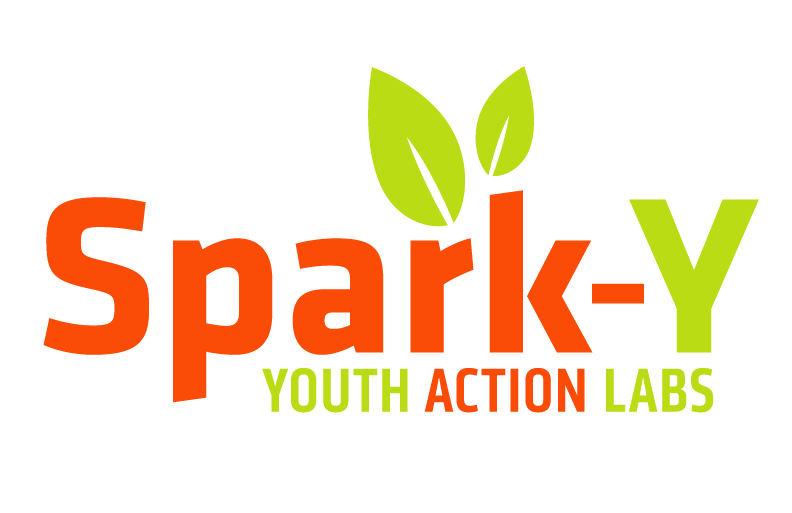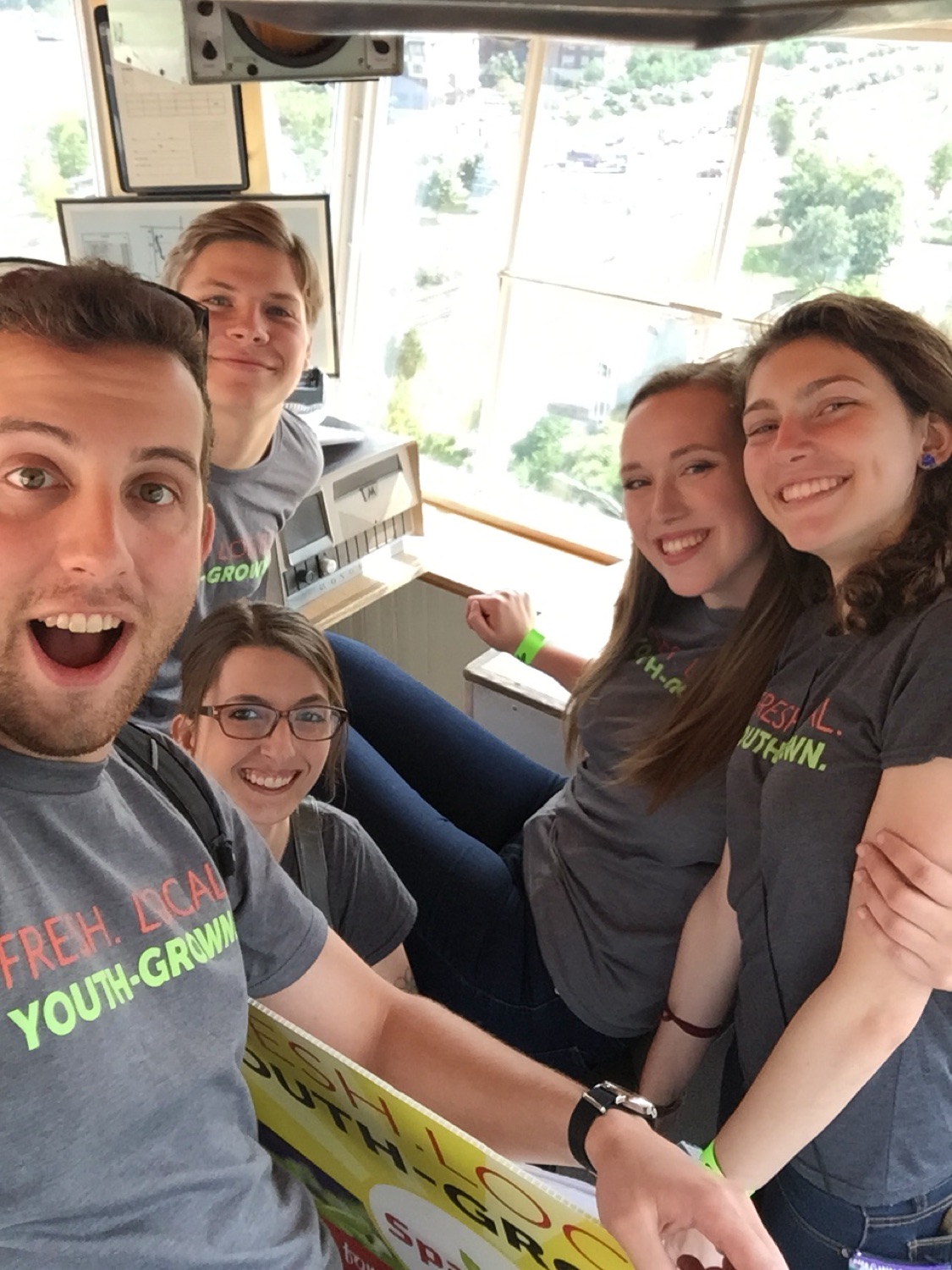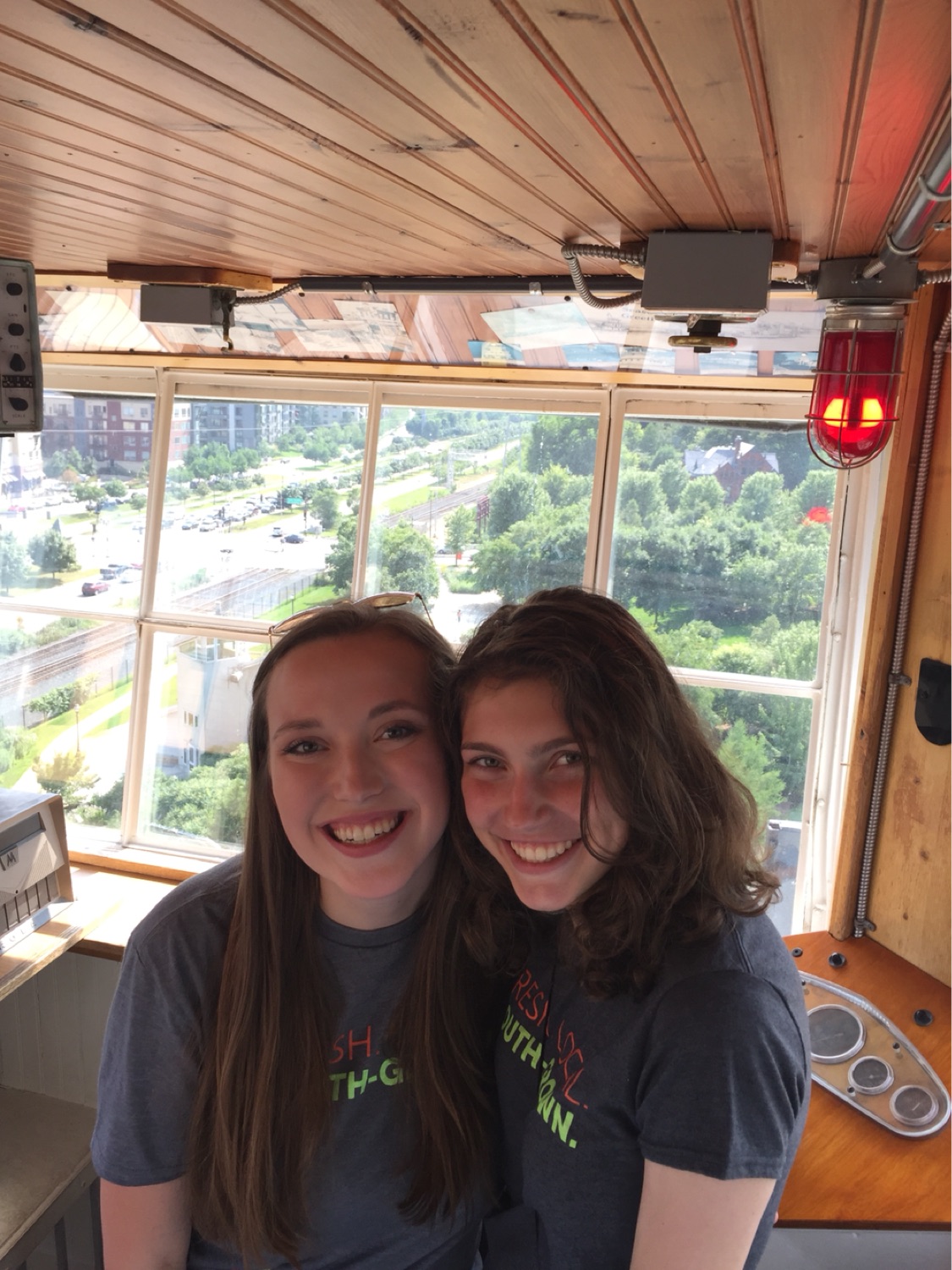In this ongoing series, our Spark-Y 2017 Summer interns are sharing their experiences. The following post is written by the RUF Squad (Roosevelt Urban Farm Squad): Anna Jentz, Ella Spurbeck, and Christian Herrera.
Roosevelt High School’s aquaponics system is one of the school’s coolest and best kept non-secrets. I’m a Roosevelt student and when I tell people about the aquaponics system their reaction is usually surprise, mixed with curiosity, and at least a little awe. To answer a few of their questions here, aquaponics is farming but using water as the source of nutrients for plants. Yes, there are fish involved. Yes, we also grow in the greenhouse outside. The school works with Spark-Y Labs to maintain the system and during the school year the system is cared for by the urban farming class. But during the summer, who cares for it? That’s where we come in. We’re the RUF (Roosevelt Urban Farm) squad intern team, tasked with caring for the Roosevelt aquaponics system and garden this summer.
Our Projects
Goal #1: System Repair.
Chris at work taking apart the syste
Our number one project this summer was to repair the aquaponics system. The Roosevelt aquaponics system was not doing so well. The plywood holding up the plantable section of the system was rotting due to the bulkheads and piping not allowing the water to drain fast enough. This meant that the system lost a TON of water from overflow and leaks, even when we were re-filling it every day. To fix this issue, we had to remove almost all plants and a significant amount of rocks from the grow bed (where we plant), remove the bulkheads, carefully pull back the pond liner, remove all rotting wood, and check on and possibly remove the plumbing at that end of the system. And that’s just the removal! After we’d taken all the bad wood out, we put new wood in, realized we’d bored holes in the wrong spot, re-bored the holes on the other side, put the new wood in (again), gently rolled the pond liner back in (carefully!!), then added a few plumbing improvements. Finally, we just had to put rocks back in, hook up the plumbing, and test to see if the system worked. And, thankfully, it did!
This project went a lot smoother than it could have. Had we ripped, poked holes in, or overly stressed the pond liner, we would have had to replace the entire thing. As an added benefit, we got to clean the rocks and system and replace a lot of the water - to the benefit of the fish. By now, we’ve also reseeded the system with plants for the RUF class to pick this fall.
Goal #2: Installation of Piano Planter.
Another one of our deliverables included the installation of a new planter in front of the school. However, this was not any ordinary planter! Rather, our job was to somehow turn an old baby grand piano into something that could hold native Minnesotan plants. To achieve this goal, there were many aspects and challenges we had to consider. First, we had to waterproof the piano so that it could withstand Minnesota’s weather and daily watering. To do this we imitated wood boat owners and painted on several layers of marine shellac. Our second major challenge with the piano was the bottom (it currently had none!). We considered many different options, including plywood and metal sheets, to name a few. However, all these had a drainage issue. Plywood would likely rot with time and it would be difficult to drill drainage holes into the metal sheet. Our solution to this problem was to use a layer of chicken wire topped by permeable landscape fabric to fashion the piano’s bottom. So far, we have completed waterproofing the piano with the shellac and installed the bottom. By the end of the first week of August, the piano should be installed in the front of Roosevelt, filled with soil, and ready for planting.
Screwing in a support board
Time to shellac
Goal #3: Turtle Sculpture.
Have you noticed a new sculpture outside of Roosevelt? One of our jobs this summer is to plant on and around this turtle sculpture, so that by the time school is back in session it will have plants all over it and look really good. However, do to situations beyond our control (funding issues) the artist working on the turtle has not yet finished it. This means that we might not get to plant on it in the remaining internship time. However, we have started the seedlings that would go onto the turtle, and we will just have to see when it’s finished.
Goal #4: Garden Maintenance.
In addition to our more construction-like goals, our team is also in charge of maintaining the Roosevelt Urban Farm. Our goal is that it will be in good shape and ready for harvesting once school begins again in the fall. We have been regularly watering and weeding the farm and have even been able to harvest over 20 lbs of produce. We also built a trellis to the garden in order to guide some squash that were taking over the place and planted lettuce and radish in the outdoor greenhouse. So far, it is looking great and on track for a great fall harvest!
Closing Thoughts
By effectively using our resources and recognizing the individual strengths of our team members, we have been able to stay under budget, ahead of schedule, and deliver quality work. This has allowed our team to be successful not only in achieving our goals but also in growing community. By staying ahead of schedule, we were able to reach out and help out the Gastrotruck team with their project. And by delivering quality work, we are setting up the Roosevelt urban farming class with a solid platform in which to continue their work in promoting awareness as to how and where our food is and can be grown.
If you’d like to hear more about our project, come check us out at the Spark-Y Summer Intern Open House on Thursday, August 10th from 4-7pm!
Also feel free to stop by Roosevelt High School to check out our work!
4029 28th Ave S, Minneapolis, MN 55406































